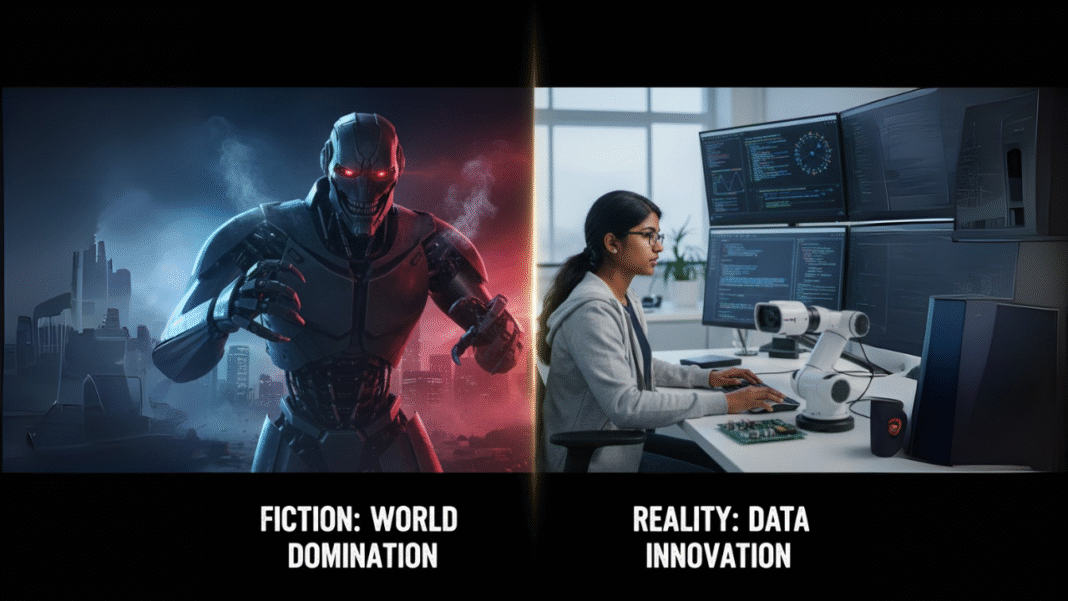Hollywood got it wrong, and so did your friend on social media. 🤖 From Terminator-style robot uprisings to claims that AI will solve world hunger overnight, misinformation about artificial intelligence spreads faster than the technology itself.
The problem isn’t just entertainment – these myths shape public policy, career decisions, and personal attitudes toward one of the most transformative technologies of our time. When 73% of people admit their AI knowledge comes from movies and social media rather than factual sources, we have a serious information gap.
Today, we’re separating AI fact from fiction with evidence, expert insights, and real-world examples. Understanding AI’s actual capabilities and limitations isn’t just academically interesting – it’s essential for making informed decisions about your career, business, and daily life in an AI-powered world.
The “Robot Takeover” Myths
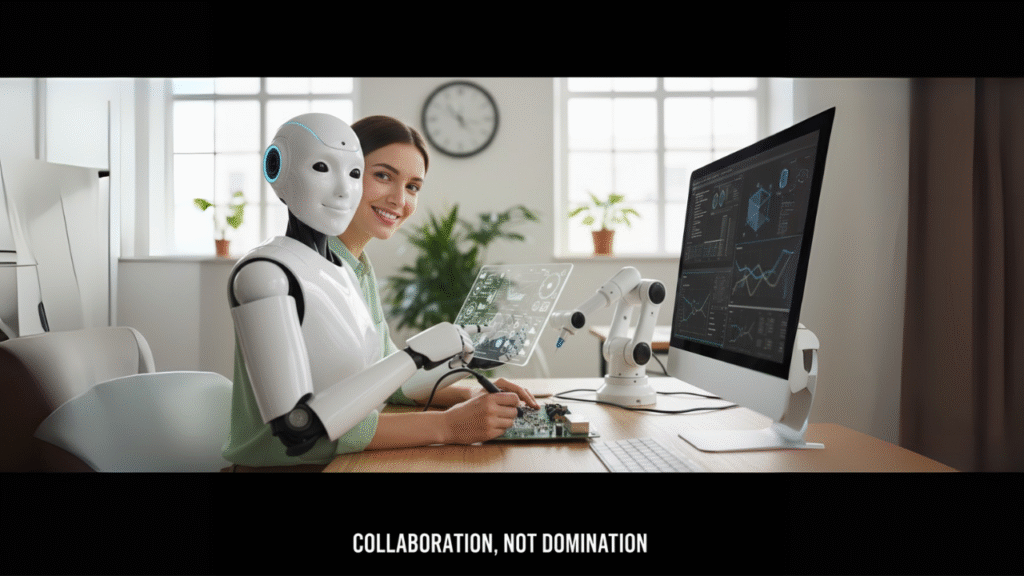
🚫 MYTH 1: “AI will become conscious and take over the world”
✅ FACT: Current AI is “narrow intelligence” – extremely good at specific tasks but completely incapable of consciousness or independent thought. Today’s most advanced AI systems are sophisticated pattern-matching tools, not thinking entities.
Expert Insight: Dr. Yann LeCun, Meta’s AI Chief Scientist, states: “Current AI is about as intelligent as a worm’s nervous system. We’re decades away from artificial general intelligence, if it’s even possible.”
🚫 MYTH 2: “Robots will physically replace all humans”
✅ FACT: Most AI is software running on regular computers. ChatGPT doesn’t have a body – it exists in data centers. Physical robots remain expensive, specialized tools for specific industries like manufacturing and logistics.
🚫 MYTH 3: “AI makes decisions independently like humans”
✅ FACT: AI systems follow programmed parameters and learned patterns from training data. They can’t make truly independent decisions or deviate from their programming in meaningful ways.
🚫 MYTH 4: “AI has emotions and intentions”
✅ FACT: AI recognizes emotional patterns in text or images but doesn’t experience emotions. When ChatGPT says it’s “happy to help,” it’s using statistically likely response patterns, not expressing genuine feelings.
Job & Economy Myths
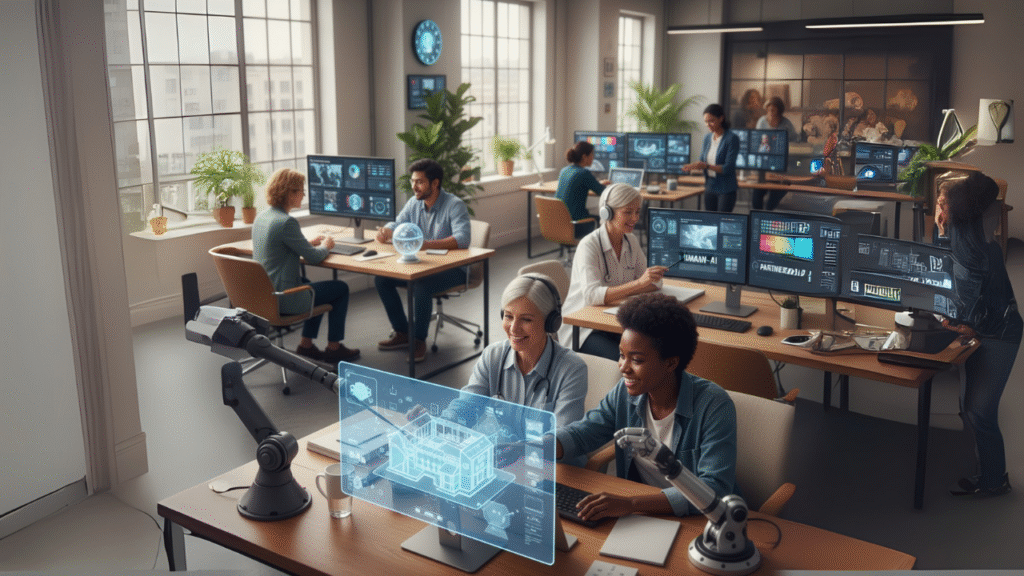
🚫 MYTH 5: “AI will eliminate all jobs overnight”
✅ FACT: Job transformation happens gradually. The World Economic Forum predicts AI will displace 85 million jobs by 2025 but create 97 million new ones. Historical technology revolutions follow similar patterns.
Did You Know?
The printing press eliminated scribes but created publishers, editors, and journalists – ultimately producing more jobs than it destroyed.
🚫 MYTH 6: “Only tech jobs are safe from AI”
✅ FACT: Many traditionally “non-tech” roles benefit significantly from AI enhancement. Teachers use AI for personalized learning, doctors use AI for diagnostics, and artists use AI for creative inspiration.
🚫 MYTH 7: “AI is too expensive for small businesses”
✅ FACT: Many powerful AI tools are free or cost less than $20/month. Small businesses often adopt AI faster than large corporations due to fewer bureaucratic barriers.
🚫 MYTH 8: “Learning AI requires programming skills”
✅ FACT: Modern AI tools feature user-friendly interfaces requiring no coding knowledge. Millions of people use AI daily through apps like Grammarly, Canva, and voice assistants without writing a single line of code.
Capability & Performance Myths
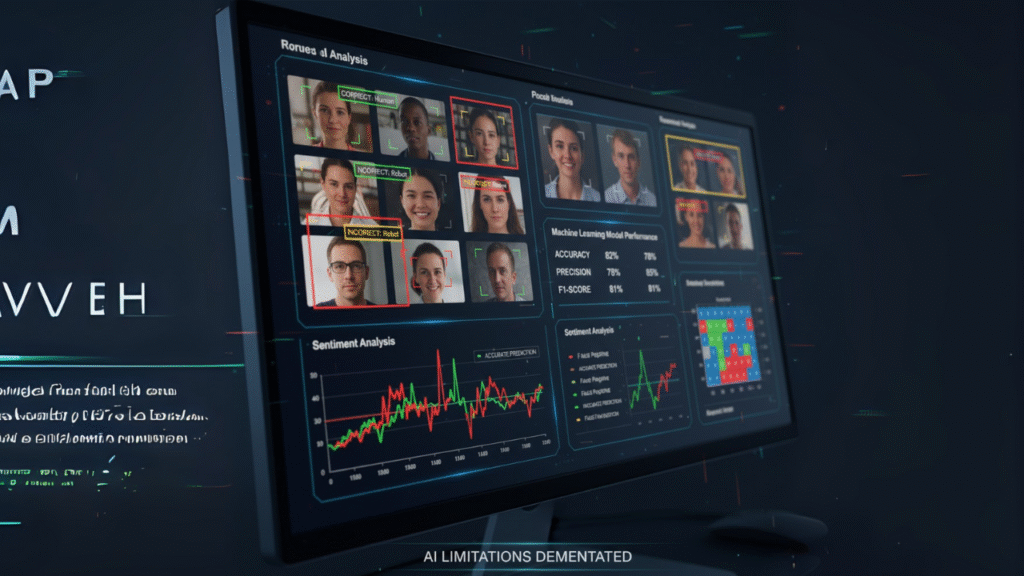
🚫 MYTH 9: “AI is always more accurate than humans”
✅ FACT: AI systems inherit biases from training data and make errors humans wouldn’t. Facial recognition AI shows higher error rates for people with darker skin tones, and language models sometimes generate completely false information with confident certainty.
🚫 MYTH 10: “AI can read minds and predict everything”
✅ FACT: AI works with observable data patterns, not telepathy. It can predict likely outcomes based on historical patterns but cannot account for truly random events or unprecedented situations.
Fact Check: Weather AI can predict rain likelihood but cannot predict exactly which person will carry an umbrella tomorrow.
🚫 MYTH 11: “AI understands context like humans”
✅ FACT: AI identifies statistical correlations without true comprehension. It might know that “bank” relates to “money” and “river” but doesn’t understand why the same word has different meanings.
🚫 MYTH 12: “AI creativity is just copying existing work”
✅ FACT: AI generates novel combinations within learned patterns. While it doesn’t create from nothing, neither do humans – all creativity builds on existing influences and experiences.
Privacy & Safety Myths
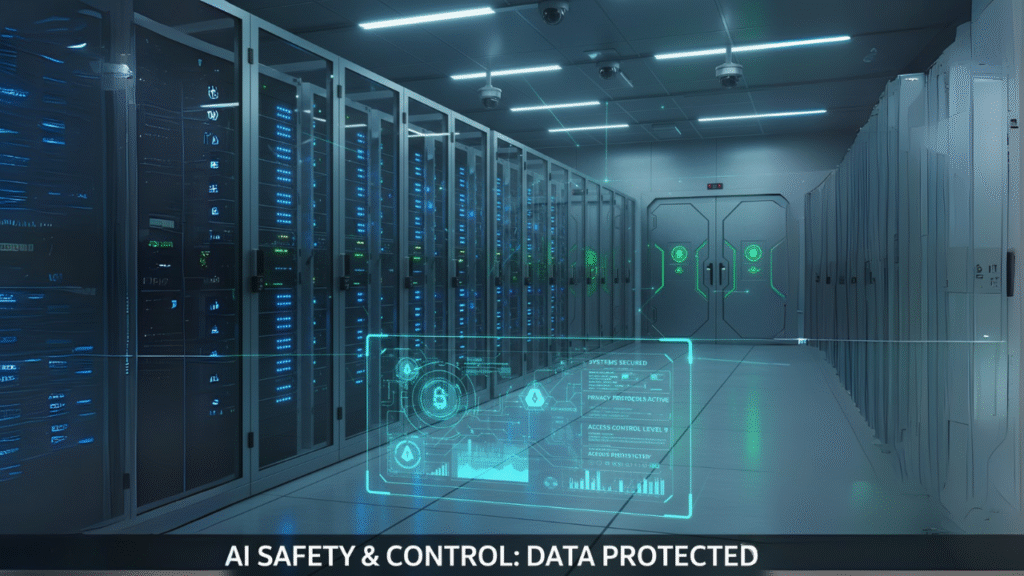
🚫 MYTH 13: “AI is constantly spying on everyone”
✅ FACT: AI systems only access data you provide or authorize. Privacy controls, GDPR regulations, and user settings determine what information AI can access. Many AI tools process data locally without sending information to external servers.
🚫 MYTH 14: “AI systems can’t be controlled or shut down”
✅ FACT: All AI systems have human oversight, shutdown capabilities, and regulatory frameworks. Emergency stop mechanisms are standard in AI development, and humans remain in control of power switches and system access.
🚫 MYTH 15: “AI will solve all world problems instantly”
✅ FACT: AI is a powerful tool requiring human guidance, ethical frameworks, and careful implementation. Complex problems like climate change and poverty need human wisdom, political will, and social cooperation alongside technological solutions.
The Real AI Landscape
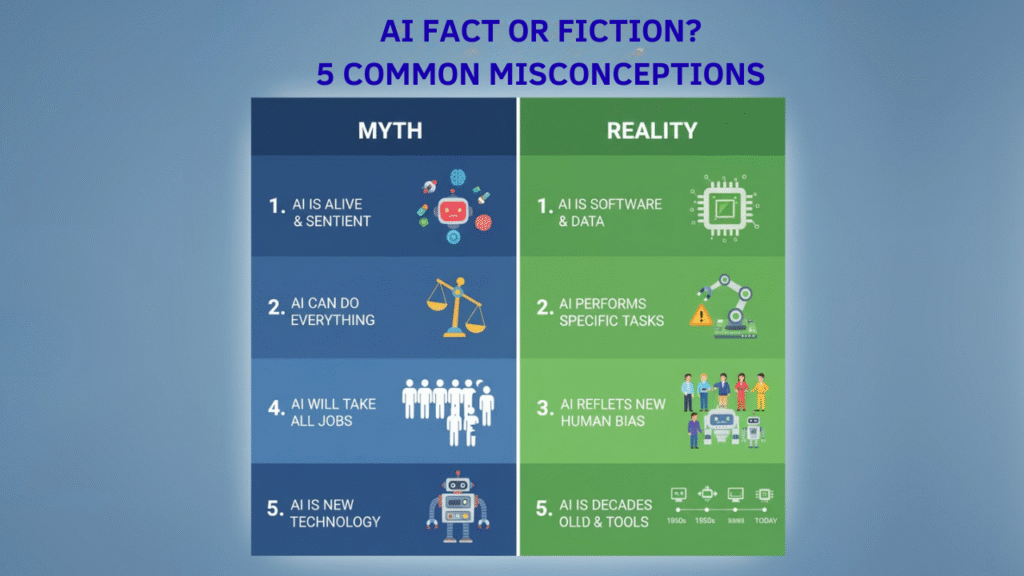
Today’s AI excels at pattern recognition, language processing, image generation, and data analysis. It struggles with common sense reasoning, emotional understanding, and adapting to completely new situations without additional training.
Current AI development focuses on making systems more reliable, reducing biases, and improving human-AI collaboration rather than creating superintelligent entities. The timeline for artificial general intelligence remains highly uncertain, with expert predictions ranging from 2040 to “never.”
Stay Informed: Follow reputable sources like MIT Technology Review, Stanford HAI, and peer-reviewed AI research rather than sensationalized headlines or social media claims.
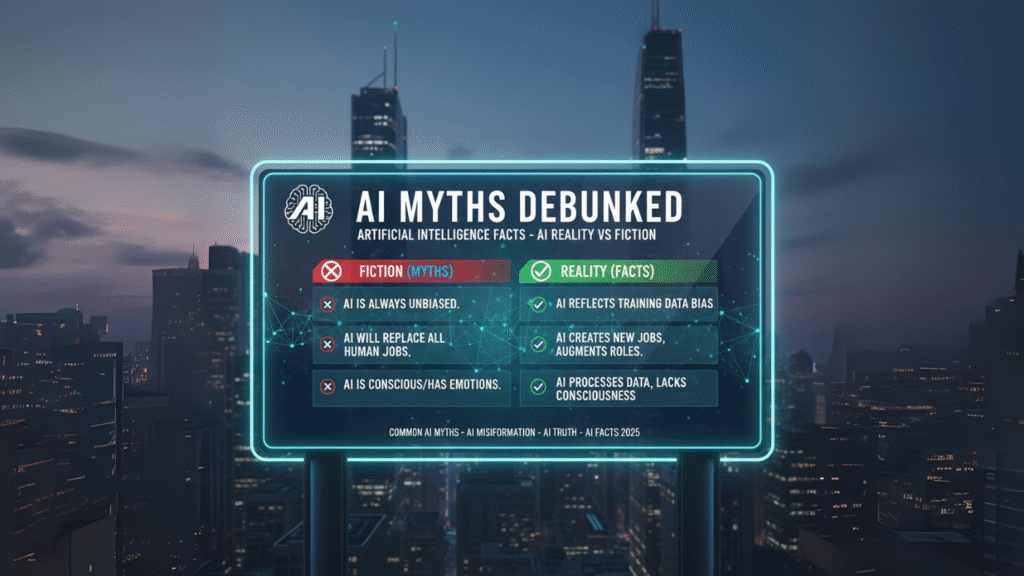
Knowledge is Your Best Defense Against AI Misinformation
Understanding AI’s real capabilities and limitations empowers you to make better decisions about careers, investments, and daily life. The future isn’t about fearing AI or expecting magic – it’s about leveraging this powerful tool while maintaining realistic expectations.
The next time someone shares an AI myth, you’ll have the facts to contribute to informed discussions. Critical thinking about AI claims protects you from both excessive fear and unrealistic hype.
Remember: AI is neither the destroyer nor the savior that popular culture portrays. It’s a transformative technology requiring thoughtful human guidance to reach its positive potential.
Think you know the real story about AI now? Take our ‘AI Myth or Fact’ quiz to test your knowledge!
What AI myth have you heard recently? Share it in the comments and we’ll fact-check it for you!
Want to learn more AI facts? Check out our beginner’s guide to AI tools that actually work – no myths, just practical applications you can use today.
